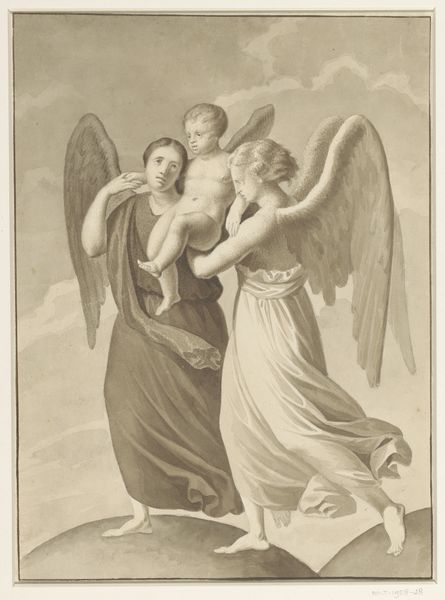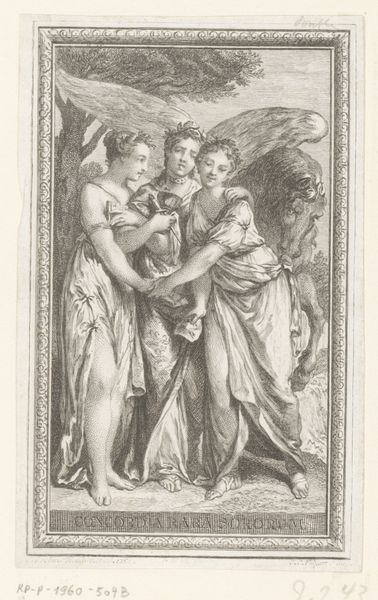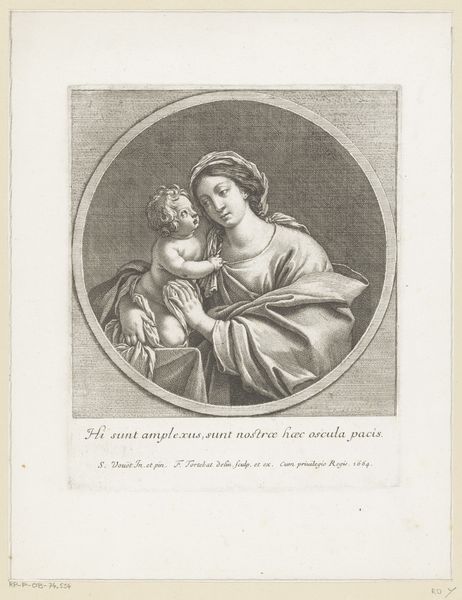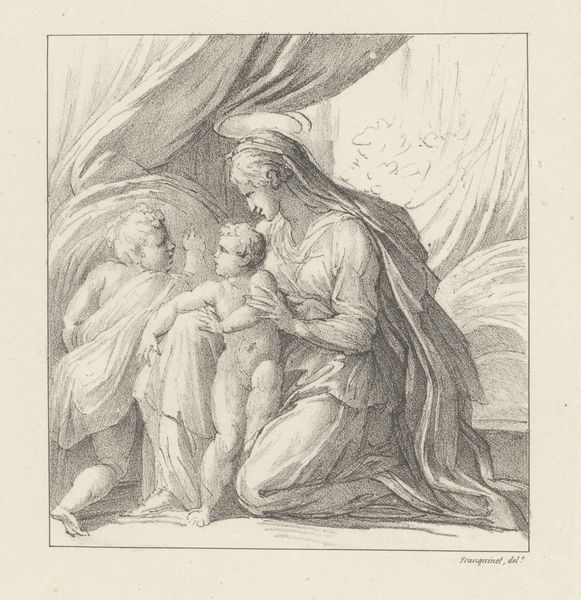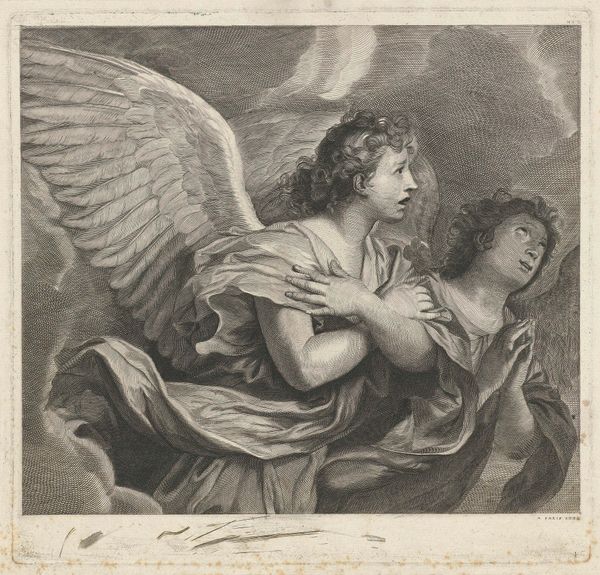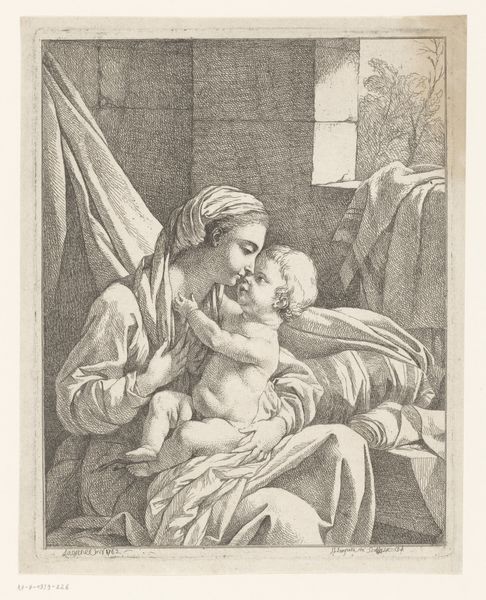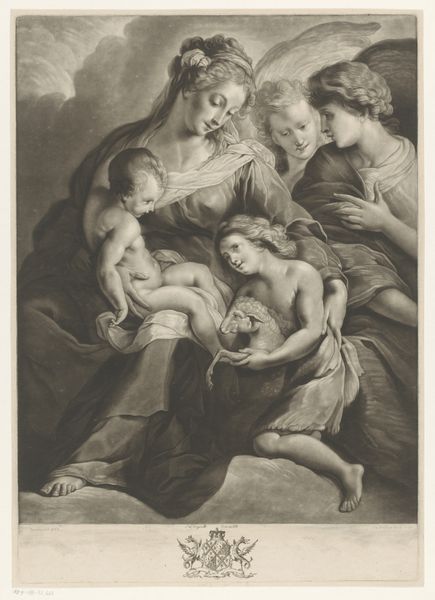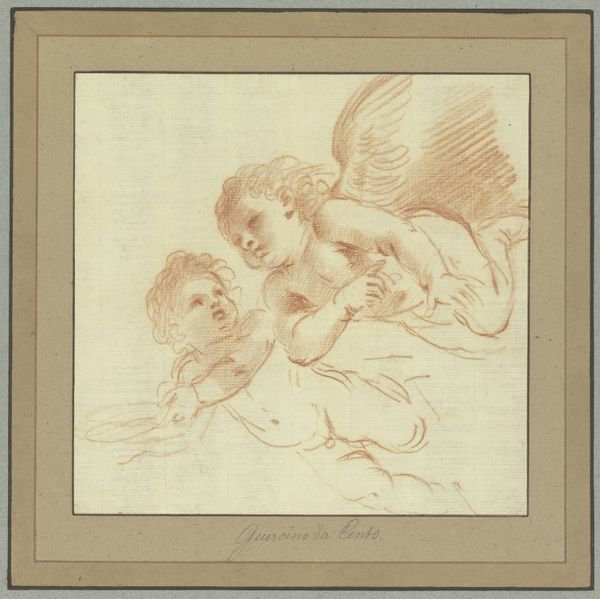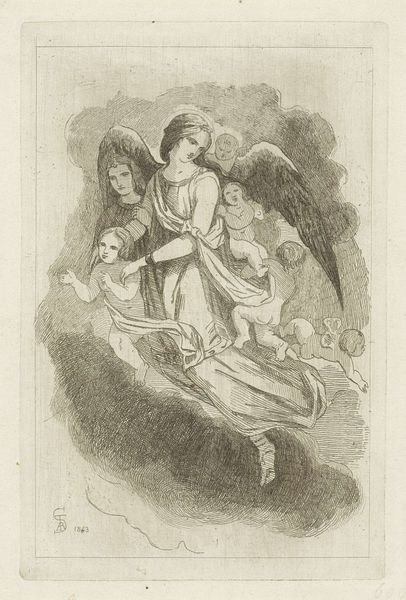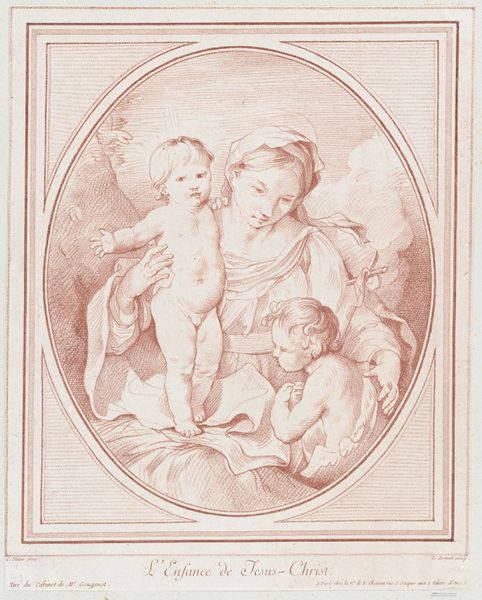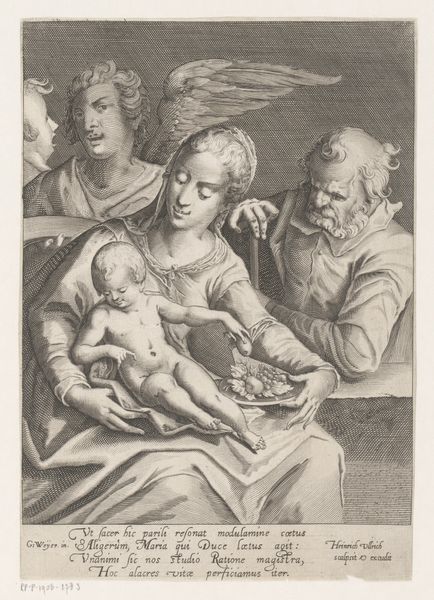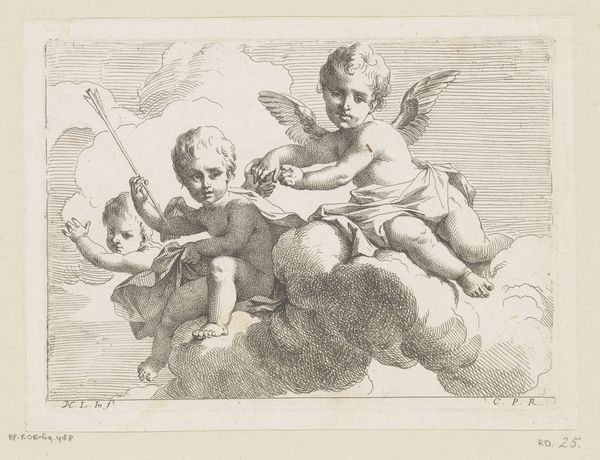
drawing, print, engraving
#
pencil drawn
#
drawing
#
allegory
# print
#
figuration
#
line
#
academic-art
#
engraving
Dimensions: Sheet (Trimmed): 11 1/2 × 11 1/8 in. (29.2 × 28.2 cm)
Copyright: Public Domain
Curator: "Angels and cherubim," a delicate engraving created in 1774 by Violante Vanni, based on designs by Franceschini and Lorenzi, and currently held at the Metropolitan Museum of Art. What are your immediate impressions of the piece? Editor: An immediate reaction to the clustered figures: they seem caught in a state of upward longing, with all gazes lifted—the light seems strategically distributed to emphasize that yearning. Curator: Indeed, that upward gaze is powerfully symbolic. The composition immediately recalls centuries of artistic depictions of heavenly hierarchies and the ascent of the soul. It’s rooted in Neoplatonic ideals, depicting layers of divine beings as intermediaries between humanity and the divine source. Editor: The linear precision achieved through engraving is remarkable. Observe the contrasting density and lightness of the linework that provides textural detail and highlights, creating an airy quality and imbuing these figures with depth and emotion, but consider how that line serves to formalize an almost formulaic approach. Curator: Vanni's work demonstrates a refined understanding of Christian iconography. The putti, or cherubs, often symbolize divine love, innocence, and guidance—elements deeply intertwined with Baroque-era expressions of faith. Look at their expressions; note how each communicates innocence and wonder, but note also their resemblance to established allegorical figures. Editor: I agree, but I cannot help but observe their arrangement creates dynamic rhythms throughout the picture plane; even in grayscale, this artwork presents compelling contrasts and formal tensions. The interplay of light and shadow also contributes an aura of dynamism within such static figures. Curator: To see "Angels and cherubim" through the lens of cultural continuity, it is valuable to notice that visual codes persist and evolve, reminding us of enduring beliefs about spirituality, the soul, and the transcendent. Even within the changing styles, there’s that recurring depiction of angels representing human longings for higher states of consciousness. Editor: Looking closely at its formal composition reveals that while these figures possess symbolic importance, the artistry is essential to shaping their enduring effect. It is the synthesis between skill, materials, form and content that brings art to life. Curator: Thank you, it’s important that you make me remember to return again and again to that point. Editor: A productive meeting as usual!
Comments
No comments
Be the first to comment and join the conversation on the ultimate creative platform.
